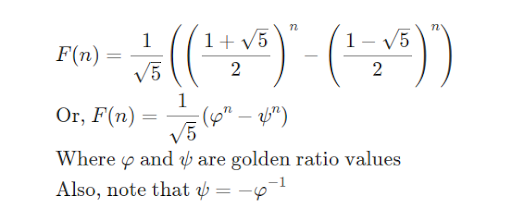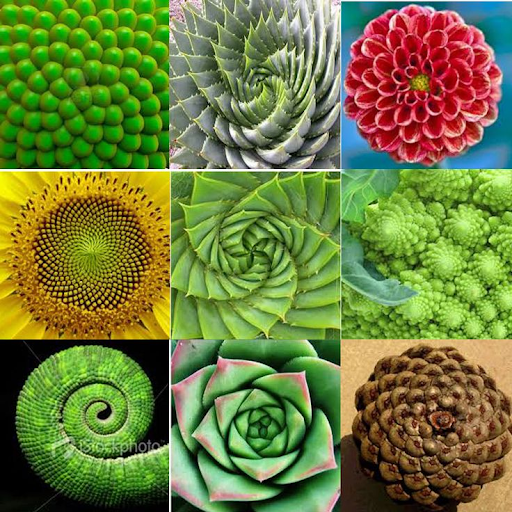Table of Contents
Introduction
Step into the world of nature’s hidden mathematics, where intricate patterns and mesmerizing marvels await.
At the heart of this tapestry lies the Fibonacci sequence, a sequence so captivating that it has woven itself into the very fabric of the natural world.
Starting simply with 0 and 1, each number in the Fibonacci sequence is the sum of the two preceding ones (0, 1, 1, 2, 3, 5, 8, 13, 21, and so on). Its allure is undeniable, as it appears time and again in various natural phenomena.
From the graceful spirals of seashells to the precise arrangement of seeds in sunflowers, the Fibonacci sequence emerges as a fundamental blueprint, a mathematical signature etched into the essence of nature.
Join us as we embark on a journey to unravel the mysteries of the Fibonacci sequence. We’ll explore its mathematical properties, its influence on plant growth patterns, and flower petal arrangements, and its role in optimizing natural processes.
What is the Fibonacci Sequence?

The Fibonacci sequence is a set of integers, known as the Fibonacci numbers, which begins with zero, followed by one, then another one, and then a series of increasing numbers.
- The Fibonacci sequence is a series of numbers where each number is the sum of the two preceding numbers.
- The first 14 numbers of the sequence are 0, 1, 1, 2, 3, 5, 8, 13, 21, 34, 55, 89, 144, and 233.
- The third number in the sequence is the sum of the first two numbers, and each subsequent number follows the same formula.
- The sequence can continue indefinitely using the same formula for each new number.
- Some sources start the Fibonacci sequence with one instead of zero, although this is not very common.
Calculating the Fibonacci Sequence
The Fibonacci sequence can be calculated mathematically in two ways.
Regular Method

In this approach, each number in the sequence is considered a term, which is represented by the expression Fn.
The n reflects the number’s position in the sequence, starting with zero. For example, the sixth term is referred to as F5, and the seventh term is referred to as F6.
Using this numbering, the Fibonacci sequence can be defined by the following three equations:
- F0 = 0 (applies only to the first integer)
- F1 = 1 (applies only to the second integer)
- Fn = Fn-1 + Fn-2 (applies to all other integers)
The first two equations essentially state that the term in the first position equals 0 and the term in the second position equals 1. The third equation is a recursive formula, which means that each number of the sequence is defined by using the preceding numbers.
For example, to define the fifth number (F4), the terms F2 and F3 must already be defined. These two numbers, in turn, require that the numbers preceding them are already defined. The numbers continuously build on each other throughout the sequence.
Golden Ratio Trick

The Fibonacci sequence can be calculated using a mathematical trick involving the golden ratio, which is approximately equal to 1.618. Here’s how it works:
- Start with the first two numbers of the Fibonacci sequence, which are 0 and 1.
- Calculate the next number in the sequence by adding the previous two numbers.
- Repeat this process to generate the entire Fibonacci sequence.
Using the golden ratio trick, you can calculate the nth Fibonacci number (Fn) using the formula:
Fn = (φ^n – (1-φ)^n) / √5
Where φ is the golden ratio (1.618) and √5 is the square root of 5 (approximately 2.236). Here’s an example of calculating the 10th Fibonacci number using this formula:
Fn = (1.618^10 – (1-1.618)^10) / 2.236
Fn = (59.790 – (-0.018)) / 2.236
Fn = 59.808 / 2.236
Fn = 26.776
So, the 10th Fibonacci number is approximately 26.776.
The Appearance of the Fibonacci Sequence in Nature

The Fibonacci sequence, with its simple rule of each number being the sum of the two before it, isn’t just a mathematical curiosity. It weaves its way through the very fabric of the natural world, appearing in a startling array of phenomena. Here are just a few examples:
Plant Growth Patterns

In nature, the Fibonacci sequence often appears in plant growth patterns, specifically in the arrangement of leaves, branches, and seeds. This pattern is known as phyllotaxis.
The Fibonacci sequence governs the number of spirals in a sunflower head, the arrangement of leaves around a stem, and the branching of trees.
- In phyllotaxis, new plant parts emerge at a specific angle from the previous part.
- This angle is often related to the golden angle, approximately 137.5 degrees.
- The Fibonacci sequence appears because the plant tries to maximize sunlight for each leaf and avoid shading other leaves.
- Sunflowers typically follow two consecutive Fibonacci numbers in clockwise and counterclockwise spirals.
- This pattern ensures that seeds are evenly distributed for optimal growth.
While the Fibonacci sequence is a common pattern in plant growth, it is not universal, and other factors such as genetics, environmental conditions, and developmental constraints also play a role in determining plant growth patterns.
Flower Petal Arrangements

Flower petal arrangements are closely related to the Fibonacci sequence and the golden ratio, both of which are fundamental mathematical concepts.
This relationship is evident in the number of petals in various flowers, which often follow Fibonacci numbers or their sums.
- Many flowers have several petals which is a Fibonacci number.
- The Fibonacci sequence allows for optimal packing of petals.
- The arrangement of petals in flowers serves a functional purpose.
- The spiral arrangement of florets in some flowers follows Fibonacci spirals.
- These spirals provide an efficient way to pack the florets densely.
- The arrangement of petals and florets enhances the flower’s reproductive success.
In conclusion, the Fibonacci sequence plays a significant role in flower petal arrangements, contributing to the beauty and functionality of flowers. This mathematical pattern exemplifies the fascinating ways in which nature incorporates mathematical principles into its designs
Spiral Shells

Spiral shells, like those found in snails and other mollusks, often exhibit a logarithmic spiral pattern that the Fibonacci sequence can describe. This spiral growth pattern provides several advantages for the animal.
- The logarithmic spiral makes the shell stronger and more resistant to damage.
- The spiral shape of the shell provides a more efficient use of space.
- Snails rely on their shells for protection and the compact shell growth allows them to carry their protective home with them as they move.
- The Fibonacci sequence is often observed in the number of spirals visible on the surface of spiral shells.
- The numbers of spirals going in one direction and the opposite direction are often consecutive Fibonacci numbers.
- This pattern is believed to be related to the optimal packing of shell material as it grows.
This mathematical principle is just one example of the many ways in which nature incorporates mathematical patterns into its designs.
Animal Breeding Patterns

Animal breeding patterns can exhibit fascinating mathematical properties, including manifestations of the Fibonacci sequence. One of the classic examples of this is seen in the breeding patterns of rabbits.
- Rabbits follow the Fibonacci sequence in their reproductive pattern.
- A single pair of rabbits (one male and one female) produces another pair in the second month.
- From the third month onwards, each pair produces a new pair every month.
- The sequence of pairs of rabbits is 1, 1, 2, 3, 5, 8, 13, and so on.
- The breeding pattern reflects the natural balance of reproduction and population growth.
- The population grows slowly initially as the breeding pairs are young and need time to mature.
- As the population increases, more pairs are available to reproduce, leading to an exponential growth rate that follows the Fibonacci sequence.
While rabbits are a classic example, similar breeding patterns can be observed in various animal populations, including insects, fish, and some mammal species.
This pattern highlights the mathematical principles that govern population dynamics and can be used to model and understand population growth in different species.
Mathematical and Evolutionary Explanations
The Fibonacci sequence, a series of numbers, can be found in various patterns in nature, which has piqued the interest of scientists. Several theories attempt to explain its occurrence, and most of these theories combine mathematical principles with evolutionary advantages.

Mathematical Principles
- Optimal Packing: One mathematical explanation suggests that the Fibonacci sequence represents an optimal packing arrangement.
- Plant Growth Patterns: The Fibonacci sequence is evident in plant growth patterns, where leaves are arranged in a way that maximizes exposure to sunlight and efficient use of space.
- Efficient Resource Distribution: The Fibonacci sequence may also optimize resource distribution within organisms.
- Sunflower Heads: In sunflower heads, the spiral arrangement of seeds allows for efficient nutrient distribution, maximizing seed production.
Evolutionary Advantages

Evolutionary Advantages:
- Fibonacci patterns have evolved in plants and animals to optimize their growth and reproduction in specific environments.
- More efficient patterns may have given certain species a survival advantage over time.
- In flower petal arrangements, having a Fibonacci number of petals may attract more pollinators, thus leading to increased reproductive success.
- The prevalence of the Fibonacci sequence in nature is an interesting example of the intersection between mathematics and biology.
- Organisms that exhibit Fibonacci patterns may be more efficient in resource utilization and reproduction.
Both mathematical principles and evolutionary advantages play a role in the prevalence of the Fibonacci sequence in nature. The Fibonacci sequence appears to be a fundamental aspect of the natural world, optimizing growth, reproduction, and resource utilization in various organisms.
Conclusion
The Fibonacci sequence appears so often in nature due to a combination of mathematical principles and evolutionary advantages. The sequence represents an optimal packing arrangement and efficient resource distribution, making it advantageous for plants and animals to exhibit Fibonacci patterns.
Additionally, organisms with Fibonacci patterns may attract more pollinators, leading to increased reproductive success. This blend of mathematical efficiency and evolutionary adaptation has resulted in the widespread prevalence of the Fibonacci sequence in nature, highlighting the intricate relationship between mathematics and the natural world.

Meerashri Thakar is a Digital Marketer and Content Marketing specialist with experience in generating SEO-optimized content and has made content on Product, Shopify, Drupal, Digital Marketing, etc.



